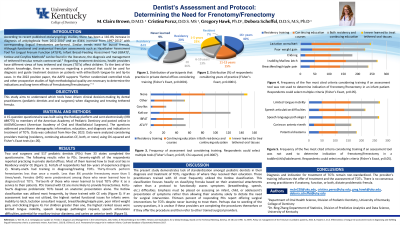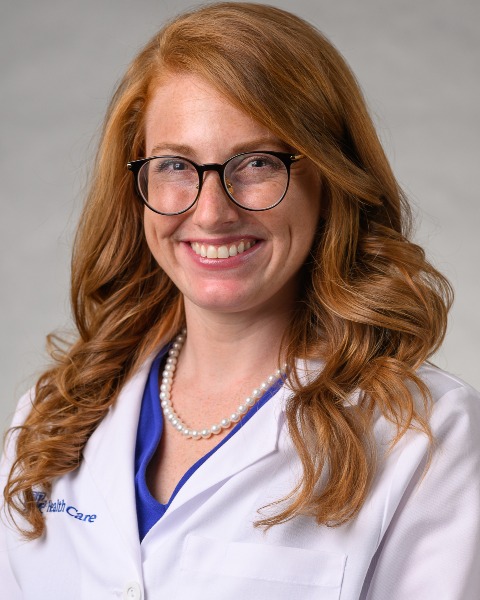Other
269 - Dentist’s Assessment and Protocol: Determining the Need for Frenotomy/Frenectomy


Maria C. Brown, DMD (she/her/hers)
Resident
University of Kentucky
University of Kentucky
Lexington, Kentucky, United States- GH
Gregory Hawk, Phd
University of Kentucky
- DS
Debora Scheffel, DDS, MS, PhD
Assistant Professor Division of Pediatric Dentisty
University of Kentucky, Lexington, KY
Lexington, Kentucky, United States .jpg)
Cristina Perez, DMD
Assistant Professor Division of Pediatric Dentisty
University of Kentucky College of Dentistry
University of Kentucky
Lexington, Kentucky, United States
Presenting Author(s)
Co-Author(s)
Research Mentor(s)
Program Director(s)
Purpose: To investigate which tools have driven clinical decision-making by dental practitioners when diagnosing and treating tethered oral tissues (TOTs).
Methods: A questionnaire was sent electronically to members of the American Academy of Pediatric Dentistry and posted online in AAOMSConnect (American Academy of Oral and Maxillofacial Surgeons). The questions addressed practitioner demographic information, education, and diagnosis and indication in treatment of TOTs. Data were analyzed considering providers training (residency, continuing education-CE, both, or none) using chi-squared and Fisher’s Exact tests (α=.05).
Results: Two oral surgeons and 519 pediatric dentists (PDs) completed the questionnaire. The following results refer to PDs. Ninety-one% had training in diagnosing/treating TOTs. Thirteen% of those who never learned to treat TOTs offer it as a service to their patients. PDs trained with CE are more likely to provide frenectomies. Forty-four% diagnose problematic TOTs based on anatomic presentation alone. The Kotlow classification was utilized most frequently (38%), by those trained with CE only. If an assessment tool was not utilized, the highest ranked functional issues for infants were: Inability to latch, lactation consultant request, breastfeeding/nipple pain, poor infant weight gain, and clicking. For children greater than one, the highest ranked issues were limited tongue mobility, speech language pathologist request, speech articulation difficulties, potential for maxillary-incisor diastema, and caries on anterior teeth.
Conclusion: Diagnosis and indication for treatment of TOTs remain non-standardized. The provider’s training influences the offer of treatment and the assessment of TOTs. There is no consensus among practitioners if anatomy, function, or both, dictate problematic frenula.

.jpg)